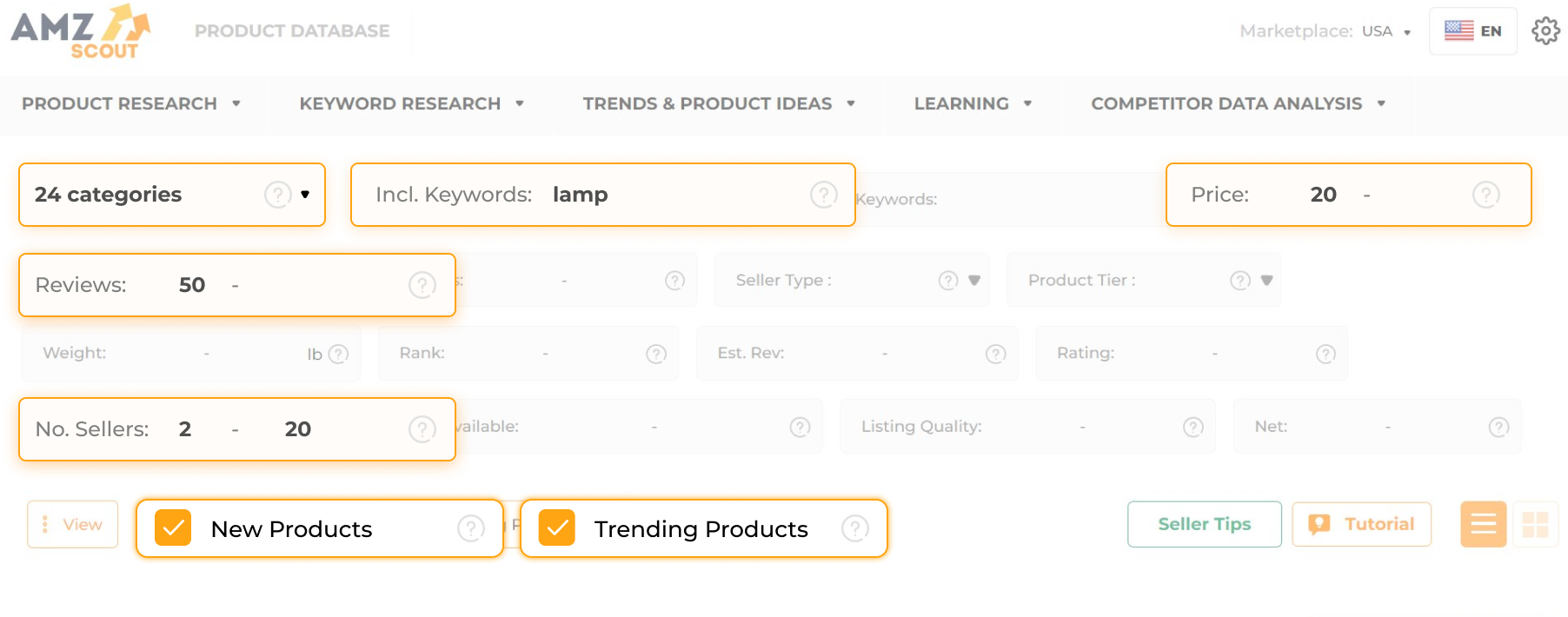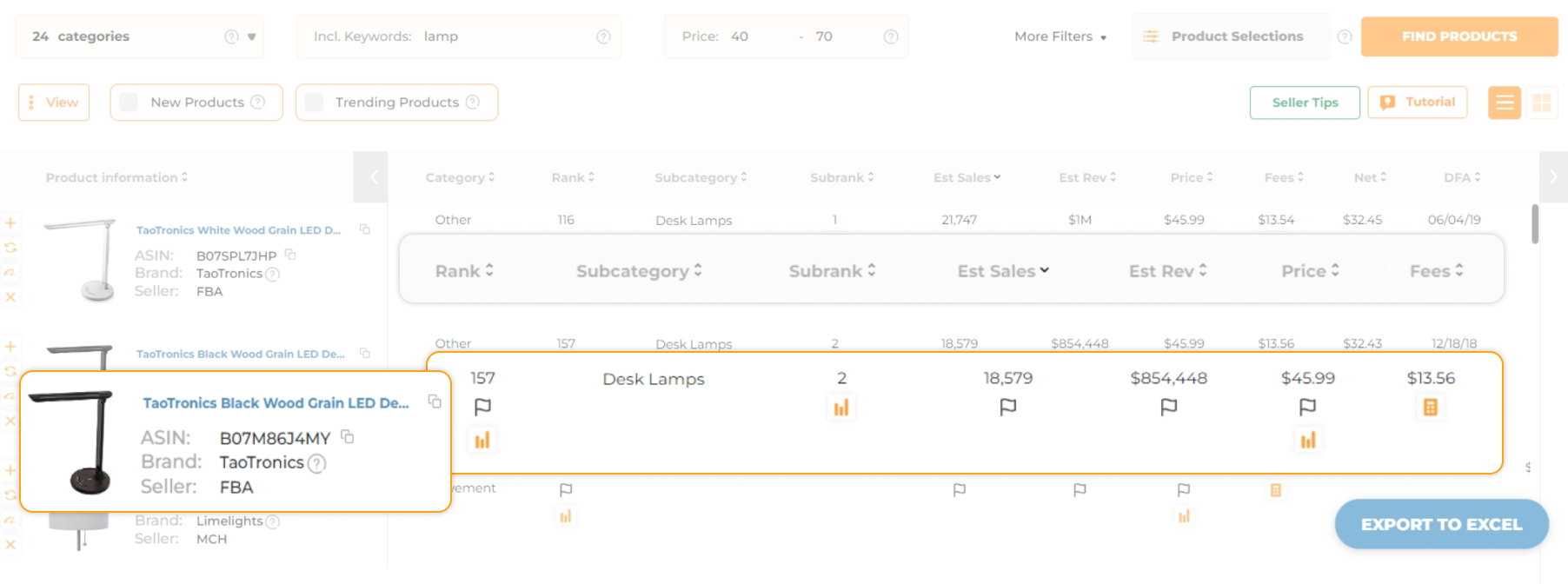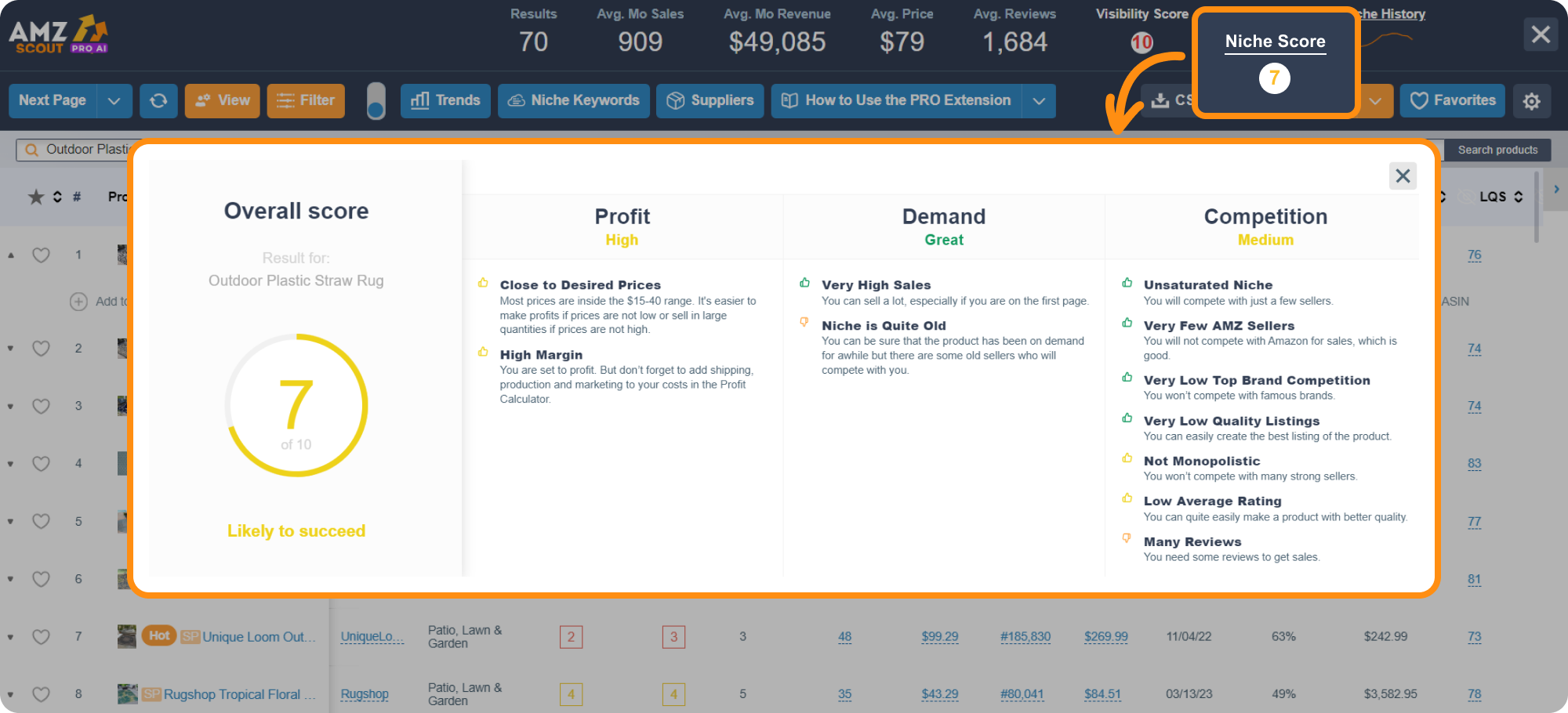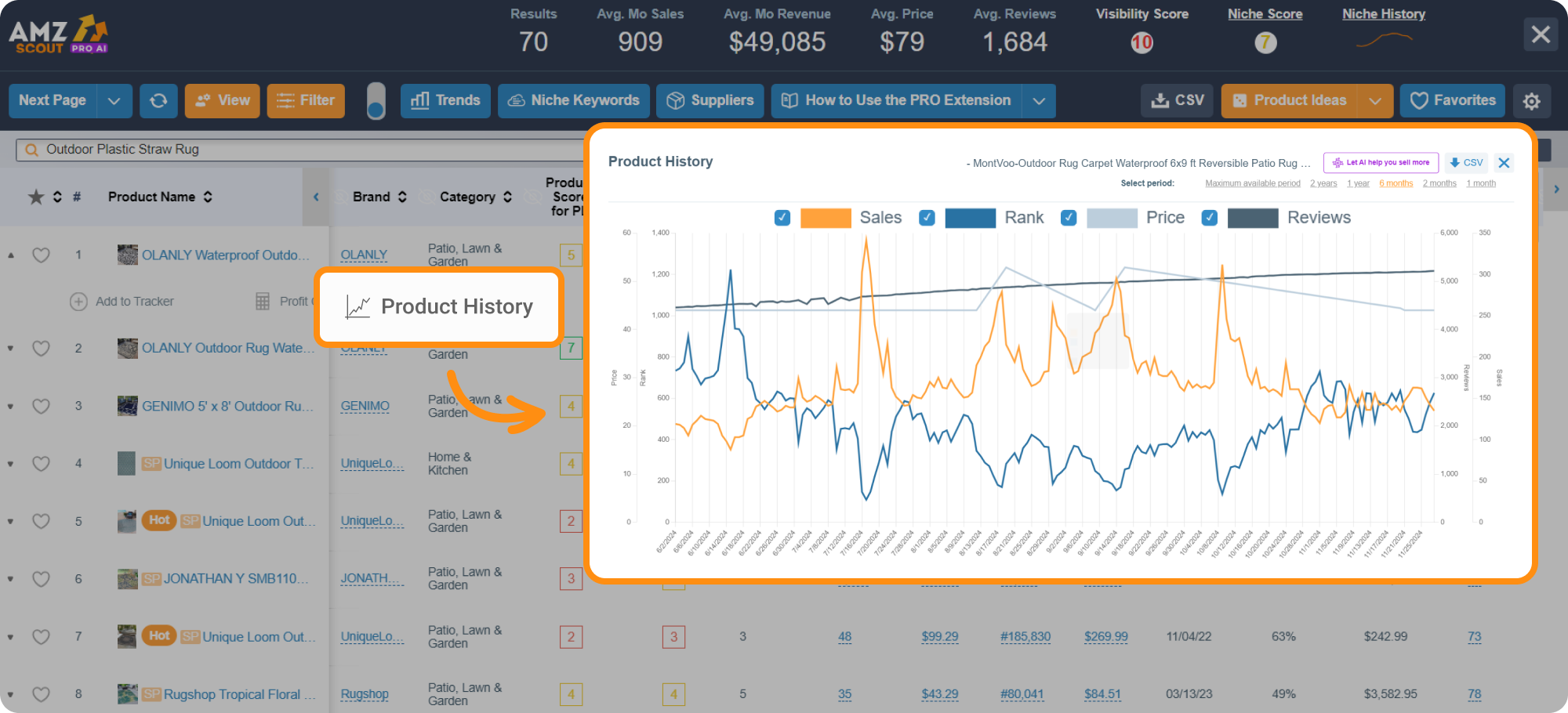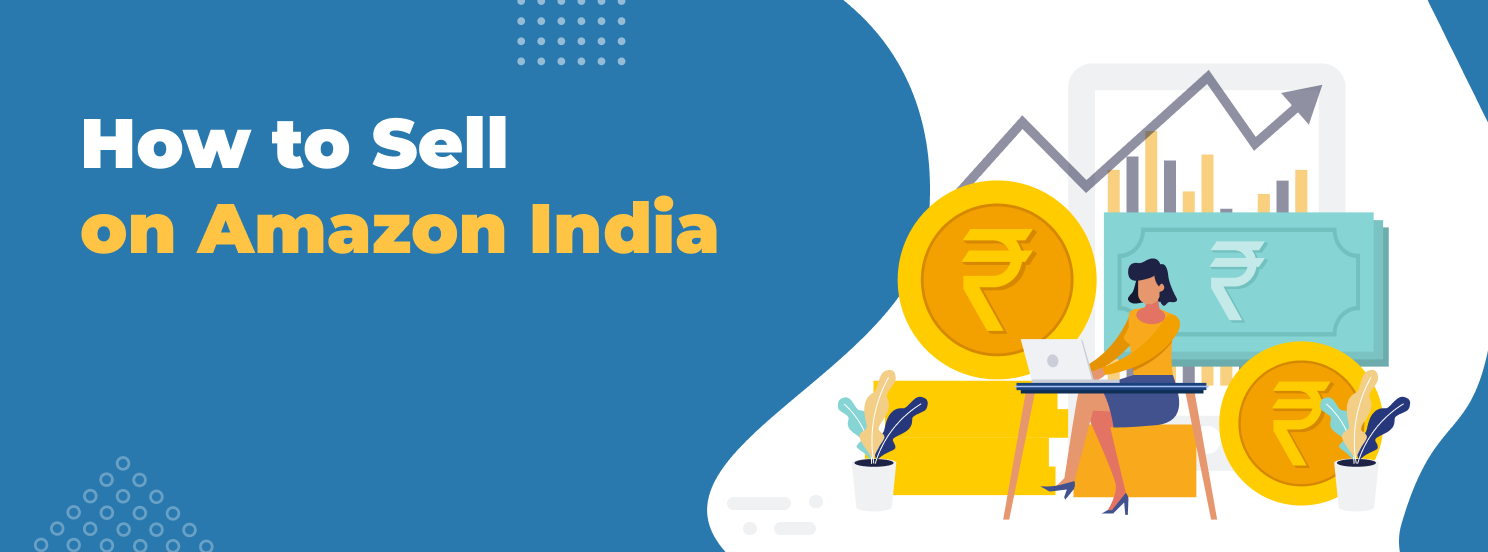
How to Sell on Amazon India and Reach a Global Market in 2025
Wondering how to sell products on Amazon India? Whether you're an established seller or starting fresh online, Amazon India is a massive opportunity. From books to clothes, digital goods to everyday items, anyone can start selling. In this quick guide, you’ll learn how to find products, set up your account, and sell successfully, step by step. Plus, we’ll cover fees, taxes, and the key rules every seller should know.
Table of contents
Why Sell on Amazon India
India’s e-commerce scene is exploding, and Amazon is at the center of it. With over 450 million monthly visits and thousands of new sellers joining every day, Amazon India gives you instant access to one of the world’s largest online marketplaces. Whether you're a small business, freelancer, or individual just starting out, selling here means visibility, trust, and tools that make it easy to grow.
In fact, India is set to become a $345 billion digital market by 2030, making now the perfect time to learn how to sell products on Amazon India, before the competition gets tougher.
Can You Sell on Amazon India from Outside the Country?
Yes, you can sell on Amazon India even if you’re based outside the country, including the USA. Amazon’s global selling program makes it possible for international sellers to reach Indian customers and grow their business online.
However, selling on Amazon.in from abroad comes with a few important requirements. You’ll need to register as a seller on the Amazon India marketplace, provide valid business documents, and comply with India’s tax and import regulations. This includes understanding GST (Goods and Services Tax) rules and possibly working with local fulfillment partners to ensure smooth delivery.
While the process may sound complex, many sellers have successfully expanded globally by learning the steps and using Amazon’s tools designed for international sellers. If you’re ready to learn how to sell products on Amazon India and tap into this booming market, it’s definitely doable with the right preparation.
How to Sell on Amazon India: Step-by-Step Guide
Getting started on Amazon India may feel overwhelming, but breaking it down into clear steps makes the journey easier.
Step 1: Register as a Seller on Amazon India
The very first step is to create your seller account on Amazon India’s seller portal. You can choose between an Individual or Professional seller account, depending on your sales volume and business needs. During registration, you’ll need to provide the following essential documents:
PAN Card - A Permanent Account Number card issued by the Income Tax Department; you can apply for one via the NSDL or UTIITSL websites.
Aadhaar Card - A government-issued identity and address proof; available through UIDAI or your nearest enrollment center.
Bank Account Details - A valid Indian bank account with your name; you can obtain this from your bank’s branch or online banking portal.
Mobile Number and Email ID - Active contact information for verification and communication; use your existing personal or business credentials.
This process verifies your identity and prepares your account to list and sell products online. Once registered, you’ll have access to Amazon’s dashboard to manage your listings, orders, and payments, a vital tool to sell successfully.
Step 2: Find the Right Products to Sell
Finding the perfect product is key to selling successfully on Amazon. To make your product research faster and smarter, use the AMZScout toolkit, designed to help beginners and experienced sellers alike discover high-demand items with strong profit potential.
Here’s how to get started:
1. Go to the Product Database. Begin by starting a free trial: just enter your email to access the powerful product search engine.
2. Choose the India marketplace. From the ‘Marketplace’ drop-down menu in the top right corner, select ‘India’ to focus your search specifically on Amazon.in.
3. Set your product criteria. Use the filters to narrow down your search. For best results, try these settings:
Estimated Monthly Sales: Over 500 sales per month to ensure good demand.
Trending Products: Enable this to see items growing at 20% or more over the last three months.
Product Tier: Prefer standard-size items to reduce shipping and FBA storage fees.
Number of Sellers: Look for products with fewer than 10 sellers to avoid highly saturated listings.
Seller Type: Avoid listings where Amazon is one of the sellers, as it’s difficult to compete with it directly.
4. Review your results. Click ‘Find Products’ and explore the listings. Check each product’s sales, price, net profit, and other key metrics. Pick a few promising options to investigate further.
Next, to confirm your picks align with your goals and have lasting potential, use the AMZScout PRO AI Extension:
5. Install the PRO AI Extension. This tool works directly on Amazon.in, giving real-time data and deeper insights.
6. Search for your chosen product. Enter the product name in Amazon’s search bar with the extension active.
7. Analyze the niche’s potential. Check the Niche Score in the upper right. It combines demand, profitability, and competition into a simple rating. As a general guideline, look for a Niche Score of at least 7 or 8. This ensures you're entering a space where there's solid market activity without being overwhelmed by established competitors.
8. Check demand trends. Use the Niche History to see how the product performs over time and through seasons. You can also view the Product History to study sales trends and spot if interest is growing or fading. Look for products that show a consistent or upward trend over the last 3 to 6 months.
By following these steps, you’ll gain a clear understanding of product demand, competition, and profitability, giving you a strong foundation to start selling on Amazon India confidently.
Step 3: Create Your Product Listing
A strong product listing can make the difference between a scroll-past and a sale. Here’s how to create a listing that helps you sell successfully on Amazon India:
Write a clear, keyword-rich title: Include the most important terms shoppers use to search for your product. Keep it concise but informative.
Use bullet points for key features: Highlight what makes your product useful, unique, or better than others. Think size, material, benefits, and use cases.
Add high-quality images: Include clear photos from different angles. Lifestyle images (showing the product in real-world use) can boost trust and engagement.
Craft a compelling description: Use simple, scannable language. Describe how the product solves a problem or adds value.
Include backend keywords: Fill out the “search terms” section with relevant words customers may use, even if they don’t appear in your title.
Follow Amazon’s guidelines: Avoid all caps, exaggerated claims, or restricted phrases. Stay professional and accurate.
To speed up the process and ensure your listing is fully optimized with relevant keywords, consider using the AI Listing Builder from AMZScout. This tool helps you generate professional, keyword-rich product listings in minutes, tailored for Amazon’s algorithm and customer search behavior.


Step 4: Choose a Fulfillment Method
Once your listings are live, you’ll need a reliable way to get your products to customers. Choosing the right fulfillment method is a key step in learning how to sell on Amazon India, as it affects your delivery speed, customer experience, and even your seller rating.
Here are your main options:
Fulfilled by Amazon (FBA): You send your products to Amazon’s warehouse, and they handle storage, packing, shipping, and customer service. This is a great option if you want a hands-off experience and fast Prime delivery for your customers.
Fulfilled by Merchant (FBM): You manage storage, shipping, and support on your own. This is ideal for sellers with existing logistics or who want more control over shipping costs.
Amazon Easy Ship: This is a hybrid option tailored to individual sellers as well as
for beginners in India. You pack your orders, and Amazon picks them up from your doorstep and delivers them to customers. It's a hassle-free solution that offers the reach and trust of Amazon logistics, without needing warehouse space.
Easy Ship is especially helpful if you're just starting to sell products on Amazon India and want a smooth, professional delivery process without the complexity of FBA. Plus, it supports cash-on-delivery (COD), which is still widely used across India.
Step 5: Promote Your Products
Listing your product is only half the job. The next step is getting it noticed. To sell successfully on Amazon India, you need to actively promote your items and take advantage of tools and events that drive traffic.
Here’s how to boost visibility and sales:
Use Amazon Ads: Sponsored Products and Sponsored Brands appear right where shoppers are already browsing. These ads help you stand out in crowded categories like clothes, digital items, or everyday things.
Offer discounts and deals: Lightning Deals, Coupons, and Prime-exclusive discounts can increase clicks and conversions, especially during peak shopping times.
Plan around Indian sales events: Big events like the Great Indian Festival, Diwali, Holi, and Republic Day sales draw massive traffic. Prepare seasonal listings and promotions in advance to capitalize on the surge.
Optimize for mobile shopping: A large portion of Amazon India traffic comes from mobile users. Keep titles short, images sharp, and bullet points clear for quick decision-making.
Leverage social proof: Encourage satisfied customers to leave reviews. Positive ratings improve your credibility and visibility in search results.
If you’re a beginner, focus on one or two channels to start, then expand as you learn what works. With the right promotion strategy, even a new individual seller can build momentum and thrive.
Fees, Taxes, and Regulations for Amazon Sellers in India
Understanding the costs and compliance requirements is essential if you want to sell successfully on Amazon India. Whether you're selling from within the country or from somewhere else, staying on top of fees and local regulations will keep your business running smoothly.
Here’s what you need to know:
1) Amazon Seller Fees: Amazon charges several fees, including:
Referral fees: Typically range from 5% to 20% of the product’s sale price, depending on the category.
Closing fees: Usually between ₹10 to ₹40 per item, based on item price and shipping method.
Fulfillment fees: Varies based on whether you use FBA, Easy Ship, or ship independently.
FBA: Starts at around ₹30 to ₹150 per item, depending on size and weight.
Easy Ship: Ranges from ₹30 to ₹100 per shipment, based on distance and parcel weight.
Self-Ship: No Amazon charge, but you'll bear your own courier costs.
2) GST (Goods and Services Tax): All sellers in India must register for GST if their annual turnover exceeds ₹40 lakhs (₹20 lakhs for some states). You must include GST details on invoices and file monthly or quarterly returns, depending on your filing status. Even individual sellers must comply once they cross the turnover threshold.
3) TDS (Tax Deducted at Source): Amazon deducts 1% TDS on your sales (before paying out your earnings) if your total annual sales exceed ₹5 lakhs on the platform. This deducted amount appears in your 26AS and can be adjusted when you file your annual tax return.
4) Import/Export Compliance: If you’re sourcing products internationally (e.g., from China), you must have an IEC (Import Export Code) and comply with customs regulations.
Expect to pay customs duties ranging from 10% to 30%, depending on the product category. You’ll also need proper labeling (including MRP, country of origin, etc.) as per Indian legal metrology rules.
5) Business Registration: While it's possible to start as an individual seller, registering as a sole proprietorship, LLP, or private limited company offers more flexibility for scaling and tax benefits in the long term.
Cost of registering a business:
Sole Proprietorship: ₹1,000–₹5,000
LLP: ₹5,000–₹10,000
Private Limited Company: ₹7,000–₹15,000
Before you begin selling online, it’s wise to consult a tax advisor or accountant familiar with Indian e-commerce rules. Staying compliant avoids penalties and helps you sell products on Amazon India with confidence.
Final Thoughts
Selling on Amazon India is a great way to tap into a fast-growing market. With the right product, solid preparation, and tools like AMZScout to guide your decisions, even beginners can start and grow a successful business. Take it step by step, stay consistent, and you’ll be on your way.
